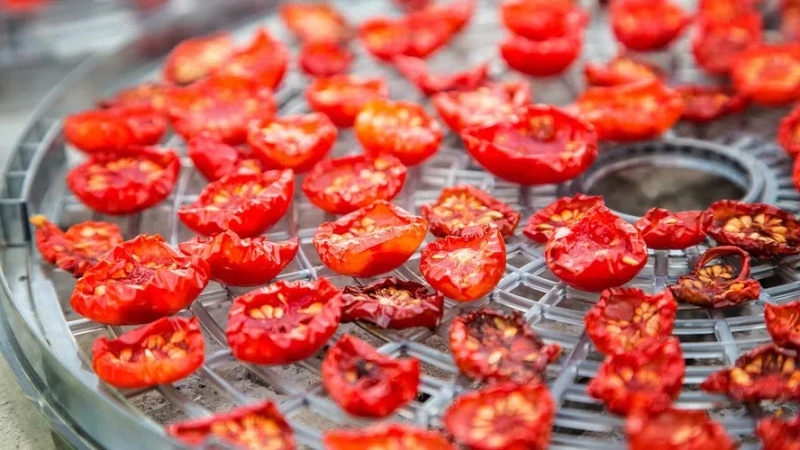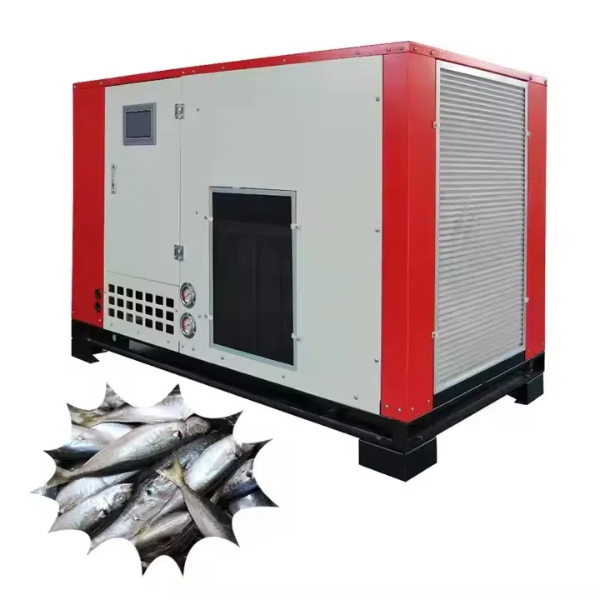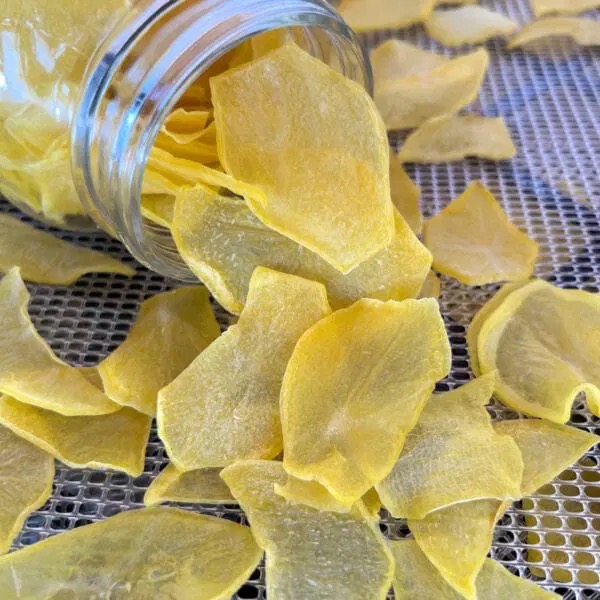
Content Menu
● Understanding Food Dehydration
● Common Uses for Food Dehydrators
● Benefits of Using a Food Dehydrator
● How to Use a Food Dehydrator
● Creative Recipes Using A Food Dehydrator
● Additional Uses for Your Food Dehydrator
● Health Benefits of Dehydrated Foods
● Tips for Successful Dehydration
● Conclusion
● FAQ
>> 1. How do you clean a food dehydrator?
>> 2. Can you dehydrate food in an air fryer?
>> 3. What types of foods can be dehydrated?
>> 4. How long do dehydrated foods last?
>> 5. Is using a food dehydrator worth it?
● Citations:
Food dehydrators are versatile kitchen appliances that allow you to preserve a variety of foods by removing moisture content. This process not only extends the shelf life of food but also concentrates flavors and retains nutrients. In this article, we will explore the many uses of food dehydrators, the benefits they offer, and some creative ways to utilize them in your kitchen.

Understanding Food Dehydration
Dehydration is one of the oldest methods of food preservation. By removing moisture, you inhibit the growth of bacteria, yeast, and mold, which can spoil food. A food dehydrator typically consists of a heating element and a fan that circulates hot air around food placed on trays. This gentle drying process maintains the food's nutritional value while enhancing its flavor.
Common Uses for Food Dehydrators
1. Dried Fruits: One of the most popular uses for a dehydrator is making dried fruits. You can dehydrate apples, bananas, mangoes, and berries to create healthy snacks or toppings for cereals and salads.
2. Vegetable Chips: Dehydrate vegetables like kale, zucchini, and sweet potatoes to make crispy chips that are healthier than store-bought alternatives.
3. Jerky: Create your own beef, turkey, or vegan jerky by marinating slices of meat or vegetables and then dehydrating them for a protein-packed snack.
4. Fruit Leather: Blend fruits into a puree and spread it on trays to make chewy fruit leathers—a great alternative to sugary candies.
5. Herbs and Spices: Preserve fresh herbs by dehydrating them for use in cooking throughout the year. You can also create your own spice blends by grinding dehydrated herbs.
6. Soups and Stews: Dehydrate leftover vegetables and meats to create custom soup mixes that can be easily rehydrated when needed.
7. Dog Treats: Make healthy treats for your pets by dehydrating meats or vegetables.
8. Crafting: Beyond food, you can use a dehydrator to dry flowers for crafts or potpourri.
9. Yogurt Making: Maintaining a constant temperature of 40°C to 45°C is crucial for successful yogurt making; a dehydrator can help achieve this.
10. Meringues: Use your dehydrator to dry meringues at low temperatures for a crunchy texture without baking.
Benefits of Using a Food Dehydrator
- Extended Shelf Life: Dried foods can last for months or even years when stored properly.
- Nutrient Retention: Dehydration preserves more nutrients compared to other preservation methods like canning or freezing.
- Cost-Effective: Buying fruits and vegetables in bulk when they are in season and dehydrating them saves money in the long run.
- Reduced Food Waste: Use up surplus produce before it spoils by dehydrating it.
- Convenience: Dried foods are lightweight and easy to store, making them perfect for camping or travel.
- Flavor Enhancement: The dehydration process intensifies flavors, making snacks more enjoyable.

How to Use a Food Dehydrator
Using a food dehydrator is simple:
1. Preparation: Wash and cut your fruits or vegetables into uniform pieces to ensure even drying.
2. Blanching (if necessary): Some vegetables may require blanching before dehydration to preserve color and texture.
3. Arranging on Trays: Spread the prepared food evenly on the dehydrator trays without overlapping.
4. Setting Temperature: Set the temperature according to the type of food being dried (e.g., 135°F for fruits, 125°F for vegetables).
5. Drying Time: Drying times vary based on the type of food and thickness; check periodically until the desired texture is achieved.
6. Storage: Once dried, store your foods in airtight containers away from light and moisture.
Creative Recipes Using A Food Dehydrator
- Dehydrated Apple Chips:
- Slice apples thinly, sprinkle with cinnamon if desired, and dehydrate until crisp.
- Kale Chips:
- Toss kale leaves with olive oil and seasoning before dehydrating for a healthy snack.
- Beef Jerky Marinade:
- Marinate thinly sliced beef in soy sauce, garlic powder, onion powder, and pepper before dehydrating.
- Fruit Leather Recipe:
- Blend your favorite fruits with a bit of honey or lemon juice, spread on trays, and dehydrate until pliable.
Additional Uses for Your Food Dehydrator
A food dehydrator is not limited to just drying fruits and vegetables; it can be utilized in various innovative ways:
- Making Granola Bars: Combine oats with honey, nuts, seeds, and dried fruits; press into a tray and dehydrate until firm.
- Dehydrating Sauces: You can dehydrate sauces like tomato sauce into sheets that can be reconstituted later for pasta dishes.
- Powdering Ingredients: After drying herbs or vegetables, grind them into powders for seasoning blends or smoothies.
- Creating Snack Mixes: Combine various dried fruits, nuts, seeds, and spices for a nutritious snack mix.
- Homemade Dog Treats: Use leftover meats or veggies to create nutritious treats tailored specifically for your pets.
Health Benefits of Dehydrated Foods
Dehydrated foods offer numerous health benefits:
- Reduced Risk of Cancer: Dried fruits and vegetables could play a role in reducing the risk of some cancers due to their concentrated nutrients.
- Improved Digestion: The dehydration process increases fiber content in fruits and vegetables which aids digestion.
- Increased Energy Levels: Dried foods provide concentrated calories that can offer an effective energy boost.
- Lower Risk of Food Poisoning: The dehydration process reduces moisture that bacteria need to thrive.
- Long Shelf Life: When properly stored, most dehydrated foods have a shelf life of several years.
Tips for Successful Dehydration
To maximize your results when using a food dehydrator:
- Cut foods into uniform sizes for even drying.
- Avoid overcrowding trays; ensure air circulation around each piece.
- Monitor moisture levels; if you notice condensation inside storage containers after sealing them, return the items to the dehydrator.
- Experiment with different temperatures based on the type of food being dried; higher temperatures are suitable for fruits while lower temperatures work best for herbs.
Conclusion
Food dehydrators are invaluable tools for anyone looking to preserve food while enhancing flavors and retaining nutrients. From making snacks like jerky and fruit leather to creating custom spice blends, the possibilities are endless. Investing in a food dehydrator not only helps reduce waste but also opens up new culinary avenues in your kitchen while providing numerous health benefits associated with consuming dried foods.

FAQ
1. How do you clean a food dehydrator?
Most trays are dishwasher safe; otherwise, wash them with warm soapy water and dry thoroughly before reuse.
2. Can you dehydrate food in an air fryer?
Yes, many air fryers have a dehydrate function; however, results may vary compared to dedicated dehydrators.
3. What types of foods can be dehydrated?
You can dehydrate fruits, vegetables, meats, herbs, and even some dairy products like yogurt.
4. How long do dehydrated foods last?
When stored properly in airtight containers away from light and moisture, most dehydrated foods can last from six months to several years.
5. Is using a food dehydrator worth it?
Absolutely! It reduces waste, saves money over time, and allows you to enjoy seasonal produce year-round.
Citations:
[1] https://www.mitchellcooper.co.uk/10-alternative-uses-for-dehydrators
[2] https://www.webmd.com/diet/dehydrating-food-good-for-you
[3] https://www.callmelore.com/fool-proof-healthy-dehydrator-recipes/
[4] https://www.mitchellcooper.co.uk/what-is-a-dehydrator-commercial-buying-guide
[5] https://brodandtaylor.com/pages/dehydrating
[6] https://www.webstaurantstore.com/guide/741/food-dehydrators-buying-guide.html
[7] https://eatsleepwild.com/homemade-dehydrated-backpacking-meals/
[8] https://www.everythingkitchens.com/media/manual/7100.pdf
[9] https://www.goodhousekeeping.com/appliances/a31904157/what-is-a-dehydrator/
[10] https://www.theseasonalhomestead.com/9-benefits-of-dehydrating-food-that-may-surprise-you/
[11] https://www.reddit.com/r/dehydrating/comments/106m6e4/what_are_things_you_commonly_eat_using_your/
[12] https://www.healthline.com/nutrition/dehydrated-food
[13] https://www.commercialdehydrators.com.au/dehydrating-recipes-filters
[14] https://www.freshoffthegrid.com/dehydrating-food/
[15] https://www.bestbuy.com/discover-learn/10-reasons-to-buy-a-food-dehydrator/pcmcat1634332391134
[16] https://cdn.shopify.com/s/files/1/0382/1836/7107/files/Sahara-Explore_parallax.jpg?v=1709063571&sa=X&ved=2ahUKEwi5lPLkiuqKAxVzJNAFHZ02EAUQ_B16BAgEEAI
[17] https://www.backpackingchef.com/food-dehydrator-recipes.html
[18] https://learn.eartheasy.com/guides/a-beginners-guide-to-dehydrating-food/
[19] https://en.wikipedia.org/wiki/Food_dehydrator
[20] https://community.waring.com/blog/p/13or1/the-remarkable-benefits-of-adding-a-food-dehydrator-to-your-kitchen-arsenal
[21] https://insanelygoodrecipes.com/dehydrator-recipes/
[22] https://www.breville.com/content/breville/us/en/blog/cooking/how-to-use-a-dehydrator/_jcr_content/root/container_741553154/container/image.coreimg.85.1200.jpeg/1718622778417/how-to-use-dehydrator.jpeg?sa=X&ved=2ahUKEwi7gbyui-qKAxXcRDABHUFLDlEQ_B16BAgHEAI
[23] https://www.foodandwine.com/lifestyle/12-brilliant-ways-use-dehydrator
[24] https://www.youtube.com/playlist?list=PL6ygl2lNPriODiu2XahnHHUhj6mEObz0P
[25] https://www.allrecipes.com/article/how-to-use-a-food-dehydrator/
[26] https://www.youtube.com/watch?v=rXNIHzcE8F0
[27] https://www.youtube.com/watch?v=lEUA2t2XD5M











